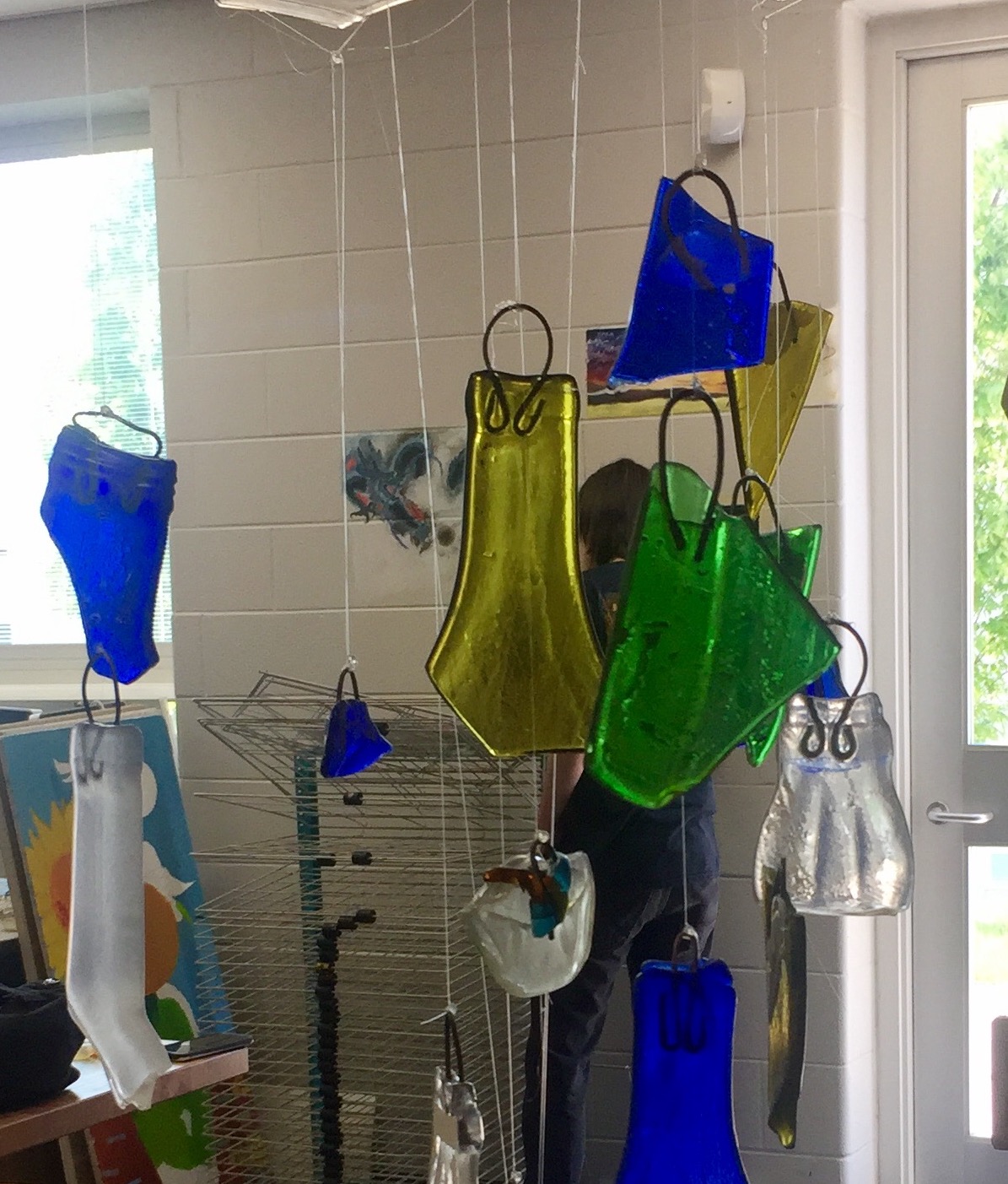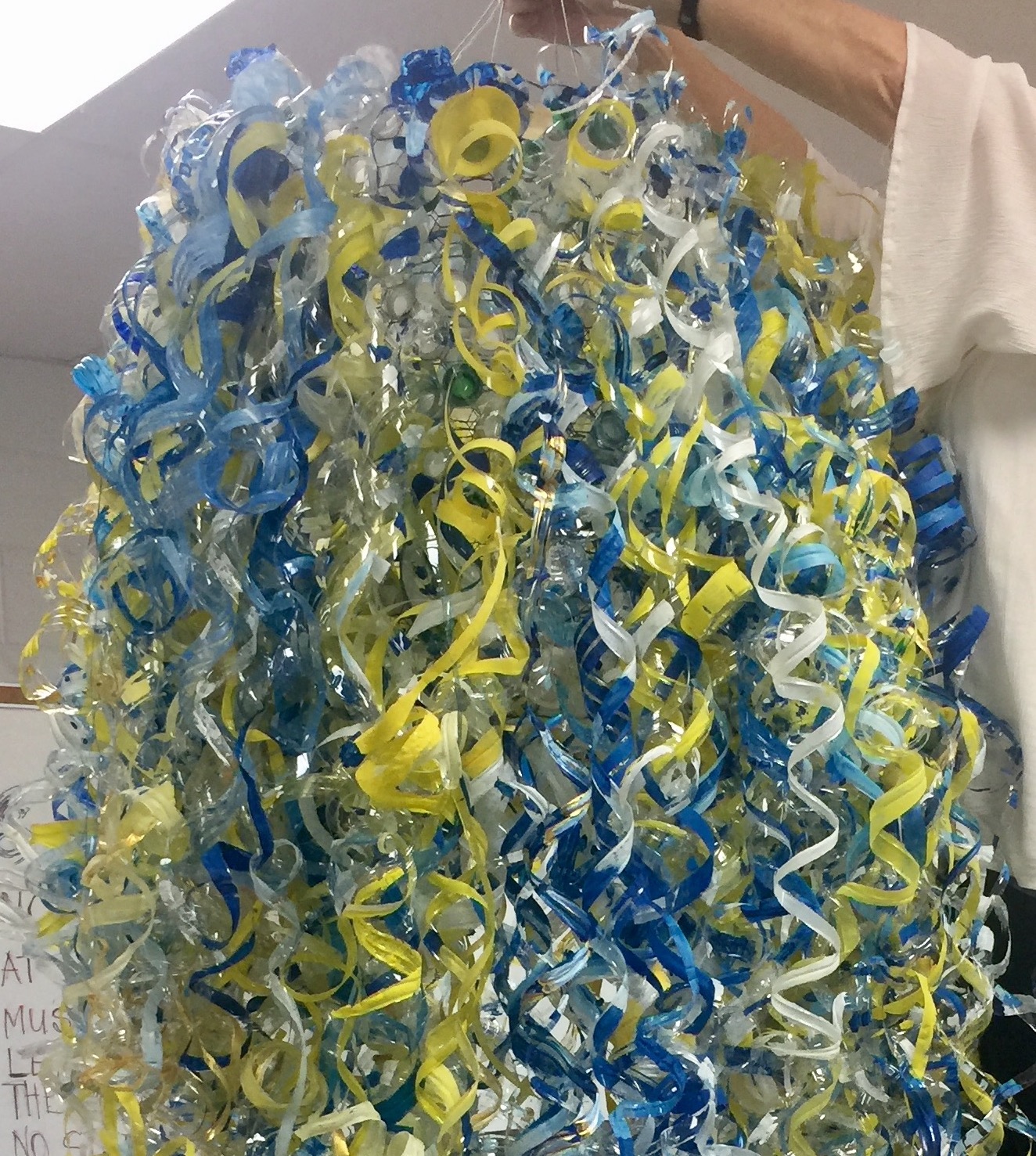Want to include some art in your science lessons? Springfield High School science teacher Terri Stewart used Feed the World lessons on water quality, then worked with art teacher Kathryn Higgins on a cross-curricular project.
Stewart’s students did some testing of water samples from C.J. Brown Dam and Reservoir taken near the old International Harvester plant and Buck Creek near Snyder Park. Stewart said, “We talked about the industries that were once along this waterway and the concerns that many people expressed when they tore out the low-head dams to build a kayaking course for Wittenberg. People were concerned because there was the potential that chemicals released by these industries many years ago could be in the sediment.” When the city disturbed the structures and increased the flow of unobstructed water, some residents feared that would release built-up sediments and pollutants into the water. The “new” kayaking part of the creek and the increased oxygen in the creek could potentially impact the stream quality in a positive way.
Stewart said, “By testing the reservoir water, I thought the students might find higher levels of nitrates and other fertilizer chemicals that are associated with farming in their tests results.” A student teacher majoring in geology had the students look at the land north of the reservoir to consider the impact of fertilizers, pesticides, and erosion on water quality.
After completing water testing on the samples and discussing water pollution, the students were responsible to teach the art class about these issues. Stewart’s students divided the art students into groups and talked about water and its importance, the concerns about water and water quality, and the water cycle. The teachers then challenged all of the students to create illustrations about the water cycle. Stewart said, “It was very interesting because my students have studied the water cycle recently, so in their mind it should look a certain way—like in the book—and the art students who have forgotten the water cycle had a different vision of how the cycle would look. It was really nice to see these two totally different types of classes working together as the art students taught my students to draw and mine taught the art students about the water cycle.”
Stewart’s students discussed water pollution, the effectiveness of determining pollution just by looking at the water, and how or if water could be cleaned up. Stewart said the students all seemed to think pollution was more observable then it actually is. The main trash pollution identified was plastics (bottles, oil containers), plastic grocery bags, thick plastic-coated cardboard cups, and random glass broken along the banks. Each group was given a trash item to find a way of “repurposing”. Projects included a glass wind chime, a paper wreath, jump ropes made from plastic grocery bags, a table created from scrap wood, and a wall hanging made from discarded clothes. Finally, students collected plastic water bottles and created a Chihuly-type sculpture.



They ended the project with a discussion on the amount of energy used and thrown away in these bottles and the impact that the use of plastic has on the environment. Stewart said this broad approach worked well with the students. “The art teacher loved working with us and the student teacher was able to use some of her expertise in the project.”